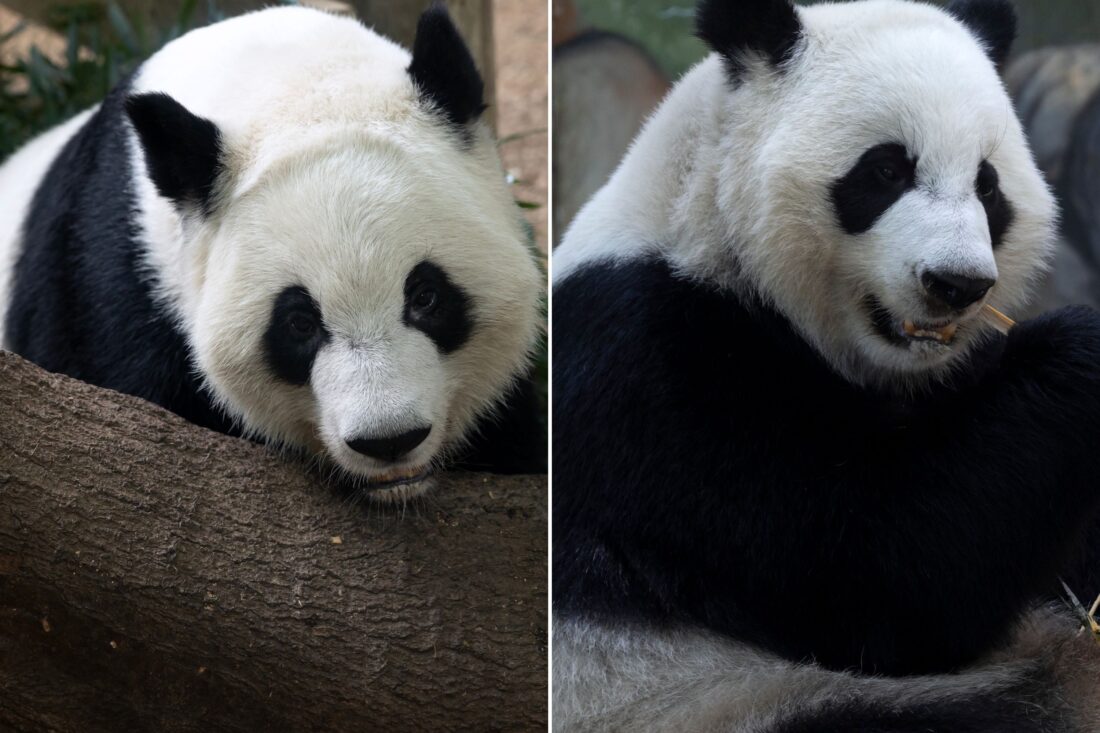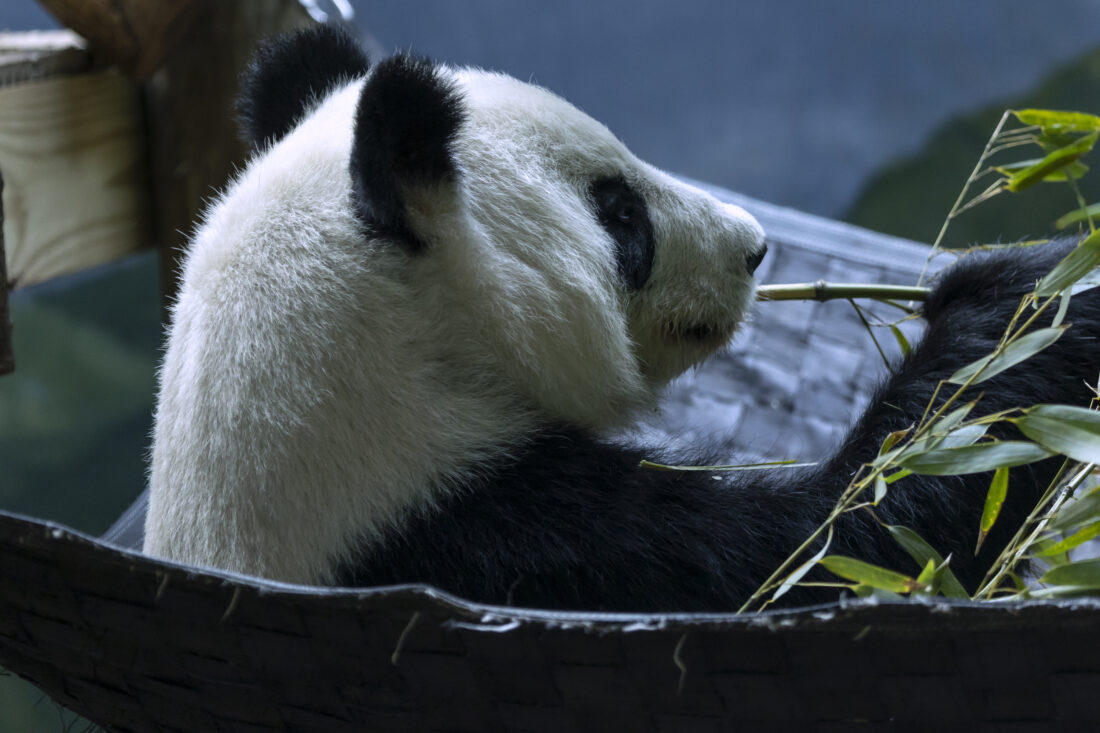When Amanda Marte was a little girl, she was so obsessed with a certain cuddly zoo animal that her friends gave her a nickname: Amanda Panda.

She owned bear-bedecked bags, pens, and notebooks, and watched countless videos of them. “They’re so lazy. They’re so goofy, they fall out of trees like clowns,” says the now twenty-year-old. “They’re kind of easy to love.”
But this weekday morning, Marte was on a melancholy mission to Zoo Atlanta. She had come with her parents and brother from Clermont, Florida—their second trip in three years—for a final visit with the last four giant pandas left in the United States. Since Washington, D.C.’s National Zoo returned its bears to China in November, the clock has been ticking. And if all goes as expected, Atlanta’s will be gone by the end of 2024.
The zoo says it doesn’t yet know when the bears will leave, but it promises to provide as much notice as possible.

Their departure would end a fifty-year foreign-exchange program of sorts. In 1972, China sent a precious pair of juveniles to Washington following President Richard Nixon’s historic visit to the Communist country. The offering came after First Lady Pat Nixon said how much she adored pandas. The gift marked the start of what has been called “panda diplomacy”—China’s policy offering allies and trade partners long-term loans of the animals. The era seems to be coming to an end, though. Zoos in Memphis and San Diego have already returned theirs, and Canada’s are gone too. The next closest lives in Mexico City but may not be with us for long. At thirty-three years old, Xin Xin is considered geriatric.
Fans were thrilled in November when Chinese President Xi Jinping told California business leaders bears might return to the U.S. But so far there’s been no eleventh-hour reprieve. It brings a heavyhearted end to a half-century love affair. When the first bears arrived in 1972, they were instant hits, attracting more than one million visitors to the National Zoo in their first month. Atlanta didn’t join the panda posse until 1999, but the city quickly proved welcome hosts.
Zoo Atlanta greeted its new residents with a $7 million habitat with two outdoor and two air-conditioned indoor areas, visible on its website PandaCam. The complex, which featured amusement park–style queuing and a Panda Pagoda gift shop, was built with family foundation money from Home Depot cofounder Arthur M. Blank. But in true Southern hospitality, the entire metro area pitched in to keep the insatiable bears well fed. A bamboo donation team still travels North Georgia to harvest the dietary staple from hundreds of backyards and lots—a year-round effort since each animal requires eighty pounds a day.
The mammals never belonged to Zoo Atlanta, which has paid China more than $16 million in leasing fees that support panda conservation. But the zoo has done its part, too. Over the last quarter century, it has conducted research and bred seven offspring, most recently twin females Ya Lun and Xi Lun, who were born in 2016. They were supposed to relocate several years ago to China’s Chengdu Research Base of Giant Panda Breeding, but travel was delayed by the COVID-19 pandemic.

Volunteer docent Stephanie Saunders has worked with the bears for twenty years. Speaking for herself and not on behalf of the zoo, she says she’s sorry to see them go. “They are so unique, so incredibly interesting, so cute and so rare … I’ll miss them terribly.” Like many visitors, her favorite is the elder male, Yang Yang, whom she calls a clown. He arrived in 1999 as a two-year-old, along with his future mate Lun Lun.
Marte agrees. She spent more than twenty minutes sitting on the exhibit floor, separated from the patriarch by just a pane of glass. True to form, he chewed on bamboo and tumbled around his enclosure, occasionally pausing for what seemed to be selfies with his admirers.
Although today’s goodbye is hard, she remains optimistic. “I definitely don’t think this will be my last time seeing them,” says the college student once known as Amanda Panda. “They’re either going to come back, or I’m going over there to see them.”









